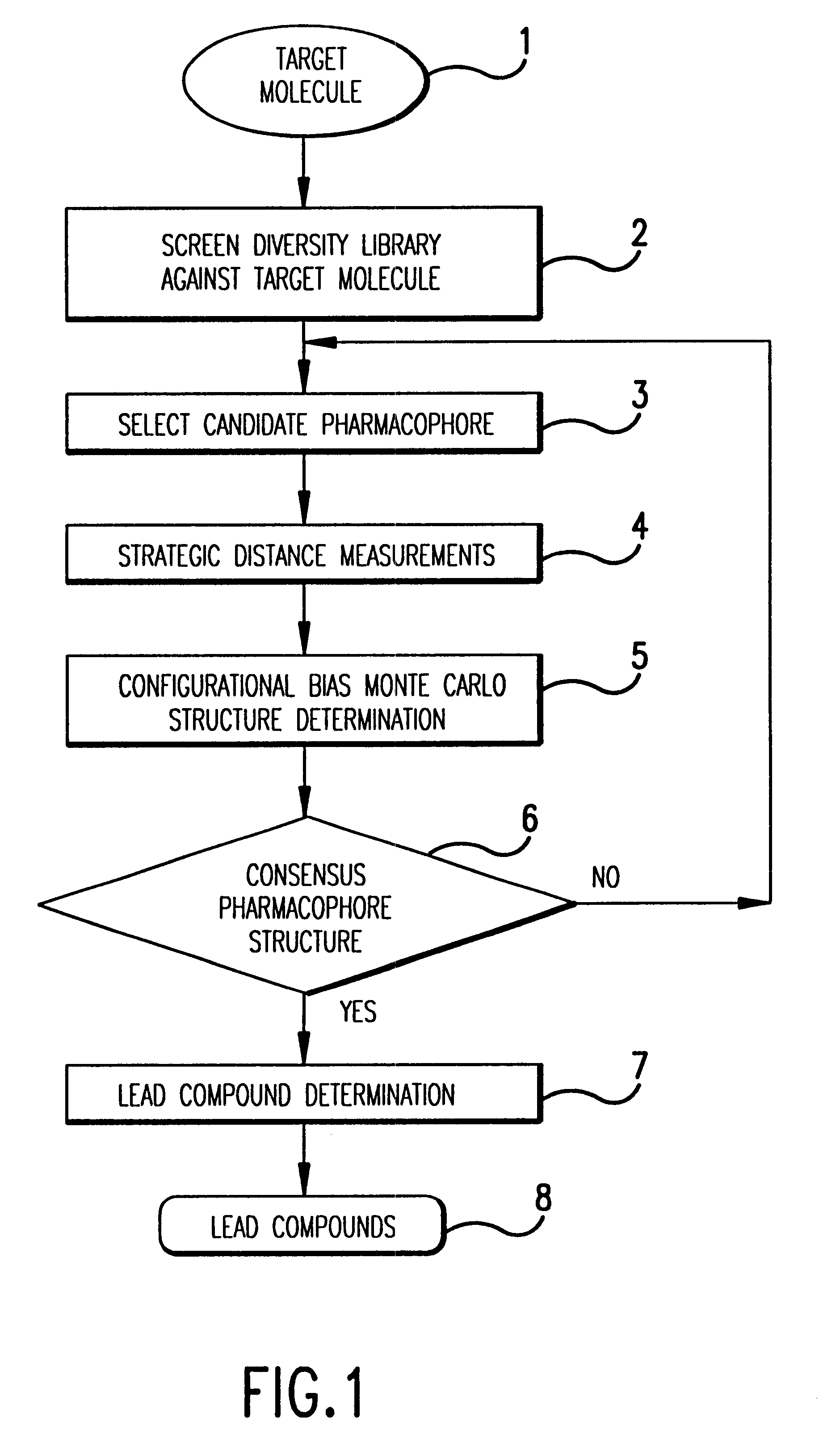Consensus configurational bias Monte Carlo method and system for pharmacophore structure determination
- Summary
- Abstract
- Description
- Claims
- Application Information
AI Technical Summary
Benefits of technology
Problems solved by technology
Method used
Image
Examples
Embodiment Construction
For clarity of disclosure, and not by way of limitation, the detailed description of the invention is described as a series of steps. A broad view of the exemplary steps of which the invention is comprised is presented in FIG. 1, a brief overview of which is presented in the text that follows.
The invention method preferably begins with a target molecule (or molecular complex) 1 having a binding target of biological or pharmacological interest. Specific binding of a molecule to the target is predicted to affect its biological activity and may provide biological effects of interest. For example, these effects might include amelioration of a disease process or alteration of a physiological response. Lead compounds 8 output from the invention are able to specifically bind to target molecule 1 and can serve as starting points for the design of a drug able to specifically bind to the target.
Diversity library screening, step 2, allows the selection from among library members of a plurality...
PUM
| Property | Measurement | Unit |
|---|---|---|
| Fraction | aaaaa | aaaaa |
| Fraction | aaaaa | aaaaa |
| Temperature | aaaaa | aaaaa |
Abstract
Description
Claims
Application Information
 Login to View More
Login to View More - R&D
- Intellectual Property
- Life Sciences
- Materials
- Tech Scout
- Unparalleled Data Quality
- Higher Quality Content
- 60% Fewer Hallucinations
Browse by: Latest US Patents, China's latest patents, Technical Efficacy Thesaurus, Application Domain, Technology Topic, Popular Technical Reports.
© 2025 PatSnap. All rights reserved.Legal|Privacy policy|Modern Slavery Act Transparency Statement|Sitemap|About US| Contact US: help@patsnap.com



